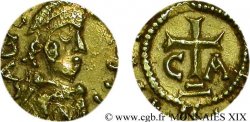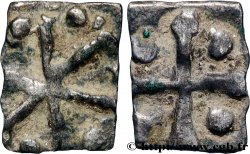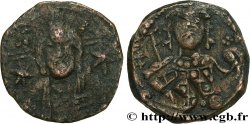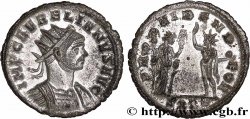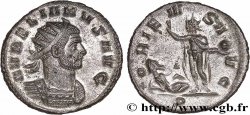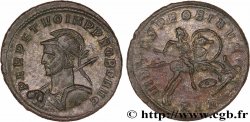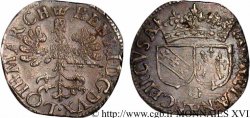- Accueil
- >
- >
bmv_899018 - CHALON-SUR-SAÔNE (CABILONNUM) - Saône-et-Loire Triens à la tête de face, groupe VII, fourré
850.00 €(Approx. 977.50$ | 748.00£)
Quantity
Add to your cart

Type : Triens à la tête de face, groupe VII, fourré
Date: (VIIe siècle)
Date: s.m.
Mint name / Town : Chalon-sur-Saône (71)
Metal : gold
Diameter : 10,5 mm
Orientation dies : 12 h.
Weight : 0,93 g.
Rarity : R3
Coments on the condition:
Ce trien est frappé sur un flan irrégulier et a une bonne partie des légendes hors flan. Monnaie fourrée avec une âme cuivreuse recouverte d’or
Catalogue references :
Obverse
Obverse legend : + CA[...] - CIV.
Obverse description : Buste de face.
Reverse
Reverse legend : [...].
Reverse description : Croix latine sur deux degrés, accostée de CA.
Commentary
Cette monnaie appartient au septième groupe du monnayage mérovingien attribué à Chalon-sur-Saône. Le monnayage de Cabilonnum est divisé en plusieurs groupes. Pour le septième groupe, plusieurs monétaires sont connus ; AVSTADIVS, ABBO, ...ORTVNVS, ALASIVS, MAGNOALDVS, JACOTE D-IC et ED-CDM VSIAS
Pour les monnaies au nom de IACOTEDIC ou JACOTEDIC, les auteurs du Moneta ont étiudié cinq exemplaires ; le Prou 205 de la collection d’Amécourt (repris sous le B. 1247), l’exemplaire de la vente Cahn du 14 décembre 1932, l’exemplaire d’Autun, celui de Montbrisson et enfin le Belfort 1248.
This coin belongs to the seventh group of Merovingian coinage attributed to Chalon-sur-Saône. The coinage of Cabilonnum is divided into several groups. For the seventh group, several coins are known; AVSTADIVS, ABBO, ...ORTVNVS, ALASIVS, MAGNOALDVS, JACOTE D-IC and ED-CDM VSIAS For the coins in the name of IACOTEDIC or JACOTEDIC, the authors of Moneta studied five examples; Prou 205 from the Amécourt collection (reprinted under B. 1247), the example from the Cahn sale of December 14, 1932, the example from Autun, that of Montbrisson and finally Belfort 1248
Pour les monnaies au nom de IACOTEDIC ou JACOTEDIC, les auteurs du Moneta ont étiudié cinq exemplaires ; le Prou 205 de la collection d’Amécourt (repris sous le B. 1247), l’exemplaire de la vente Cahn du 14 décembre 1932, l’exemplaire d’Autun, celui de Montbrisson et enfin le Belfort 1248.
This coin belongs to the seventh group of Merovingian coinage attributed to Chalon-sur-Saône. The coinage of Cabilonnum is divided into several groups. For the seventh group, several coins are known; AVSTADIVS, ABBO, ...ORTVNVS, ALASIVS, MAGNOALDVS, JACOTE D-IC and ED-CDM VSIAS For the coins in the name of IACOTEDIC or JACOTEDIC, the authors of Moneta studied five examples; Prou 205 from the Amécourt collection (reprinted under B. 1247), the example from the Cahn sale of December 14, 1932, the example from Autun, that of Montbrisson and finally Belfort 1248







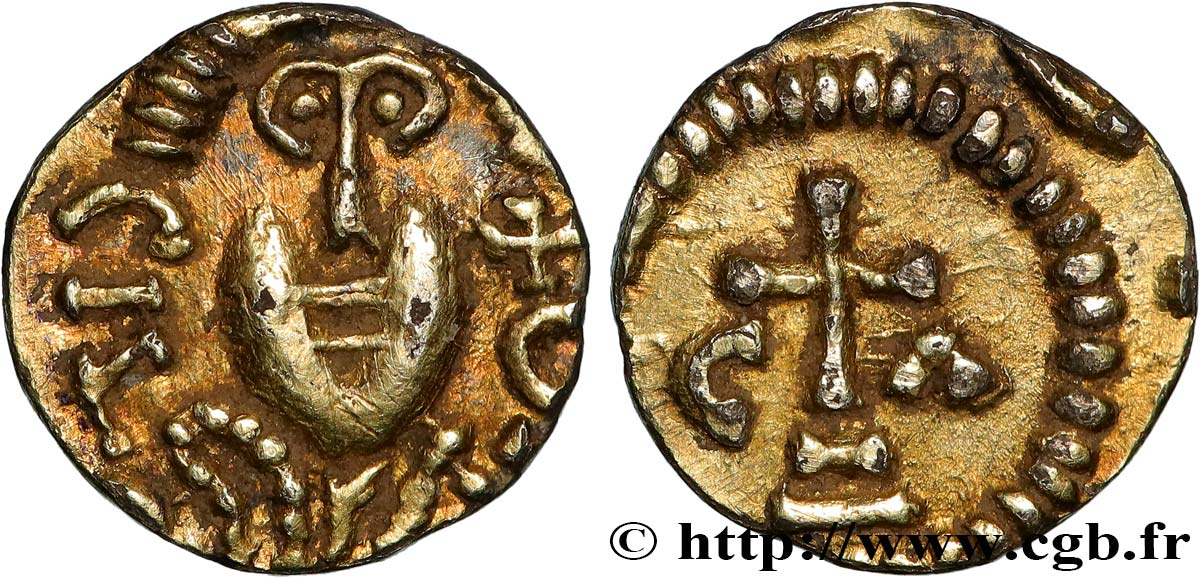
 Report a mistake
Report a mistake Print the page
Print the page Share my selection
Share my selection Ask a question
Ask a question Consign / sell
Consign / sell
 Full data
Full data